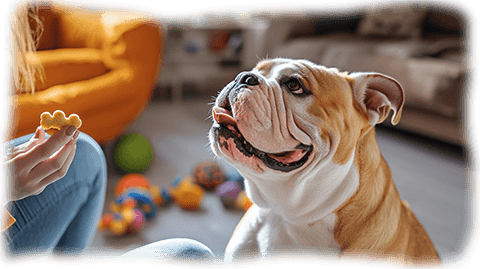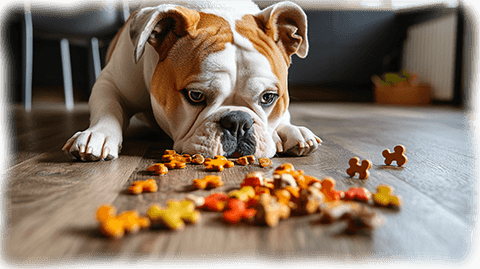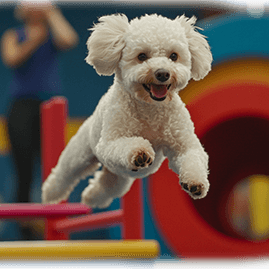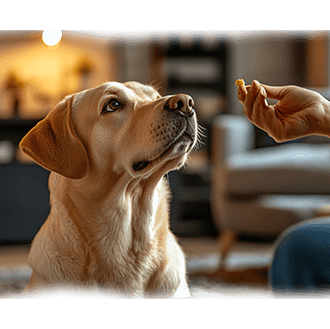How to Train Bulldogs: A Complete Guide
Training a bulldog can be both rewarding and challenging. These lovable, loyal dogs are known for their stubborn streak, which can make traditional training methods a little more difficult. However, with patience, consistency, and the right techniques, your bulldog can become a well-behaved and happy companion. Let’s dive into how you can train your bulldog effectively, focusing on their specific needs and characteristics.
Understanding Bulldogs: Personality and Behavior
Bulldogs are known for their strong-willed, sometimes stubborn personalities, but they are also very affectionate and loyal. Understanding their temperament is the first step in successful training. They aren’t the most active breed, so it’s essential to keep sessions short and motivating.

- Stubborn but Loving – Bulldogs can be quite headstrong, which means you’ll need extra patience. But they are also eager to please, especially when they feel a strong bond with their owner.
- Low-Energy Dogs – Bulldogs don’t have the highest energy levels, so training that involves a lot of physical activity might tire them out quickly. Short, frequent training sessions are the best approach.
- Food Motivated – Bulldogs love food, which can be a great tool during training. High-value treats can help get their attention, but be mindful of their weight.
Basic Bulldog Training Tips
Before moving on to more advanced commands, start with the basics to lay a strong foundation. Bulldogs need clear, consistent commands to understand what’s expected of them.
- Positive Reinforcement – Use treats, praise, and affection to reward good behavior. (Amazon affiliate link) Bulldogs respond much better to rewards than punishment. If they associate training with something fun, they’ll be more willing to participate.
- Short Sessions – Since bulldogs can get tired easily, keep training sessions short—around 10-15 minutes. This will prevent them from getting bored or frustrated.
- Consistency – Stick to the same commands and routines every time. If different family members are involved, make sure everyone uses the same words and techniques.
- Patience is Key – Bulldogs are slow learners due to their stubbornness. Don’t expect immediate results—stay calm, keep practicing, and celebrate small victories.

Essential Commands for Bulldogs
Here are some key commands to teach your bulldog:
- Sit – Bulldogs are typically good at learning the sit command because it’s a natural resting position for them. Hold a treat above their head and gently guide them into a sitting position while saying “sit.” Reward them immediately when they follow through.
- Stay – This command can be tricky for a bulldog, but it’s essential for safety. Start with short stays, gradually increasing the time and distance as they improve.
- Come – Since bulldogs can be a bit stubborn, teaching recall is critical. Use treats and praise, and practice this in an enclosed area until your bulldog consistently comes when called.
- Leave It – Bulldogs can be very food-driven, so teaching “leave it” is useful for preventing them from grabbing something harmful or off-limits.
House Training Your Bulldog
House training a bulldog requires patience, especially since bulldogs can be slow to pick up the concept. Here’s how to go about it:
- Establish a Routine – Bulldogs do well with a structured routine. Take them outside first thing in the morning, after meals, and before bed. Consistency is key here.
- Crate Training – Bulldogs often find crates comforting (Amazon affiliate link), and crate training can help with housebreaking. Use the crate as a safe space where they won’t soil and take them out to potty regularly.
- Positive Reinforcement – Always reward your bulldog immediately after they eliminate outside. This reinforces the idea that going outside is good behavior.

Dealing with Bulldog Stubbornness
Stubbornness is the most common challenge bulldog owners face. Here are some strategies to overcome it:
- Keep Training Fun – If training feels like a chore to your bulldog, they’ll resist it. Make training fun by incorporating games and treats to keep their interest.
- Use High-Value Treats – Not all treats are created equal. Bulldogs can be picky, so find treats they absolutely love and reserve them for training sessions to keep them motivated. (Amazon affiliate link)
- Avoid Punishment – Bulldogs don’t respond well to punishment or negative reinforcement. Harsh training methods can make them shut down or become more stubborn. Stick to positive techniques, even when you’re frustrated.
Advanced Training: Bulldogs Can Learn Tricks Too!
Once your bulldog has mastered the basics, you can start working on more advanced tricks. While bulldogs aren’t known for agility or speed, they can still learn fun tricks like “roll over,” “shake,” and even “play dead.”
- Agility Challenges – Bulldogs can enjoy small agility challenges, like learning to weave through poles or jump over low obstacles. Keep the obstacles small and low to prevent injury, and always monitor their energy levels.
- Puzzle Toys and Mental Stimulation (Amazon affiliate link) – Since bulldogs aren’t very physically active, mental stimulation is critical. Use puzzle toys to engage their brain and reward them with treats for solving the puzzle.

Socialization is Key
Like all dogs, bulldogs need proper socialization to be well-rounded and behave well in different environments. Introducing your bulldog to new people, dogs, and situations early on will help them become more confident.
- Early Socialization – Start exposing your bulldog to different sights, sounds, and environments while they’re still puppies. This will help reduce fear and anxiety as they grow older.
- Leash Training and Public Manners – Bulldogs should be introduced to walking on a leash early (Amazon affiliate link), as well as basic manners in public places. Practice in low-distraction environments before moving to busier settings.
Bulldog Health and Training
Bulldogs are prone to several health issues, such as breathing problems due to their flat faces (brachycephalic syndrome) and joint problems like hip dysplasia. Keep these in mind when training:
- Watch for Overheating – Bulldogs overheat easily, especially during exercise. Keep an eye on their breathing and avoid training sessions in extreme heat.
- Adapt for Joint Issues – If your bulldog has joint problems, avoid any strenuous activities or jumps that could strain their joints. Focus on gentle exercises.
Training Resources for Bulldogs
Here are some helpful resources to guide you through the process of training your bulldog:
- Books:
- Bulldog Training: The Complete Guide to Training the Best Bulldog Ever (Amazon affiliate link) by Anthony Rhodes
- The Complete Guide to English Bulldogs: How to Find, Train, Feed, and Love your new Bulldog Puppy by David Anderson. (Amazon affiliate link)
- Bulldog Communities:
- Online forums like Bulldog Club of America offer advice from fellow bulldog owners.
Conclusion
Training a bulldog may take extra patience, but the results are well worth it. By focusing on positive reinforcement, short training sessions, and being mindful of their health needs, your bulldog can become a well-behaved and loyal companion. Start with the basics, tackle one challenge at a time, and don’t forget to enjoy the process!
Affiliate Disclosure
This post may contain affiliate links, which means I earn from purchases made through links. Please see the privacy policy page for more details.





